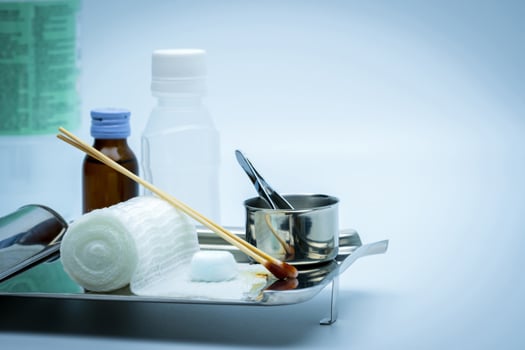
A microdiscectomy is a surgical procedure performed to remove a portion of a herniated disc in the spine. This surgery involves making a small incision in the back and using specialized tools to remove the herniated portion of the disc. After the procedure, the incision is closed, and a dressing is applied to the surgical site to protect it from infection and help with the healing process.
One of the most common questions patients ask after a microdiscectomy is when they can remove the dressing. This article discusses the answer to this question, which depends on several factors, including the type of dressing that was applied, the surgeon's preferences, and the patient's overall health and healing progress.
General Guidelines
In most cases, patients can expect to keep the dressing on for at least the first few days following the surgery. This is because the dressing serves as a protective barrier that helps to keep the incision site clean and free from infection. In addition, the dressing can reduce swelling and bruising around the surgical site.
Dressing Type
The type of dressing used can also affect when it is safe to remove it. Some surgeons prefer to use a waterproof dressing that can be left in place for up to a week, while others prefer a non-waterproof dressing that needs to be changed more frequently. If a waterproof dressing was used, you may be able to shower and bathe normally without removing it.
If you experience any signs of infection, such as redness, swelling, or discharge from the incision site, you should remove the dressing immediately and contact your surgeon for further instructions. Your doctor may prescribe antibiotics to treat the infection and prevent it from spreading.
Patient Health
Another factor that may affect when the dressing can be removed is your overall health and healing progress. If you have any underlying health conditions, such as diabetes or an immune system disorder, you may need to keep the dressing in place longer to reduce the risk of infection. In addition, if you experience complications during the healing process, such as bleeding or wound breakdown, it may be necessary to leave the dressing on for an extended period.
Healing Process
It is important to follow your surgeon's instructions regarding when to remove the dressing after your microdiscectomy. Removing it too early can increase the risk of infection and slow down the healing process, while leaving the dressing on for too long can also increase the risk of infection and other complications.
In addition to keeping the dressing in place, you may also need to take other steps to promote healing and prevent complications after your surgery. This may include resting and avoiding strenuous activities for several weeks following the procedure, taking pain medication as prescribed, and following a healthy diet to promote healing.
You should also follow up with your surgeon regularly so he or she can monitor your healing progress and address any concerns or complications that may arise. By working closely with your surgeon and following his or her instructions carefully, you can ensure a safe and successful recovery from your microdiscectomy.
Although herniated disc treatment with microdiscectomy surgery is generally very successful, a hole is left in the outer wall of the disc. Patients with a large hole in the outer ring of the disc experience 70 percent of all reherniations after surgery. A new treatment, Barricaid, which is a bone-anchored device proven to reduce reherniations, was specifically designed to close the large hole often left in the spinal disc after discectomy. In a large-scale study, Barricaid was proven 95 percent effective in a study of over 500 patients. This means 95 percent of Barricaid patients did not undergo a reoperation due to reherniation in the 2-year study timeframe.
If you have any questions about the Barricaid treatment or how to get access to Barricaid, ask your doctor or contact us at 844-288-7474.
For full benefit/risk information, please visit: https://www.barricaid.com/instructions.


Comments